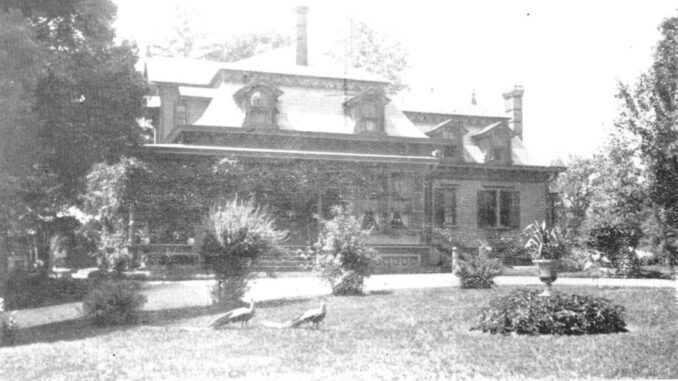
HILLSDALE—The corner of Patterson Street and Hillsdale Avenue is nothing out of the ordinary these days. Occupied by one of many banks in the Pascack Valley, customers go back and forth every day on routine business. Next door is the large campus of St. John’s R.C. Church and parochial school, its classrooms filled with eager little learners. Across the street, a Chipotle.
Today we go back to a much different Hillsdale. There were no cars, no telephones, no electricity. Only a handful of people lived in the vicinity, and these families owned vast farms. There was no “downtown” to speak of, no shops, no restaurants. The landscape was covered in forests and fields, interrupted only by the babbling Pascack Brook and a few narrow wagon paths.
This is the scene that first greeted New York businessman David P. Patterson (1840–1879). The year was 1860, and at just 20 years old he had bought some 56 acres from the Demarest family in an area that would one day be the center of busy suburban Hillsdale. (To be sure, land prices were much different then, and so were 20-year-olds.) Young Patterson had big plans for his investment.

Patterson became the president of the Hackensack & New York Extension Railroad Company in 1866. Backed by a group of investors, he was largely responsible for bringing the railroad to the Pascack Valley in 1869. He realized that this means of transportation would not only permit development of the land along the proposed line, but also open the area to business.
Patterson exerted his influence to see a new branch of the Hackensack & New York Railroad extend up from North Hackensack, first as far as Hillsdale, which was the original terminus, and then up to Montvale by 1871. All of our local towns can trace their suburban development back to this time in history.
For Patterson himself, the project meant the construction of the train depot on his land, followed by the car shops, engine house, cooling station, turntable, and water tower that comprised this new railroad center. For years, the railroad provided employment for many of Hillsdale’s men.
The line opened for passenger service on March 4, 1870, and Patterson got started on Hillsdale’s first residential development just two months later, subdividing his land into hundreds of lots from the center of town outward, along Washington Avenue, Broadway, Hillsdale Avenue, and Kinderkamack Road.
When prospective buyers from New York City came to look at these lots, they would need a place to stay. He built a four-story hotel called the Hillsdale House, which still stands at the southeast intersection of Broadway and Hillsdale Avenue, directly across the street from the railroad station. Patterson also donated the land for Veterans Memorial Park in 1871.
His elaborate Second Empire-style Victorian mansion stood on land west of the aptly named Patterson Street, just about between the modern-day TD Bank building and St. John’s Academy. In the 19th century this was one of the grandest estates in the area, a true showpiece, with grounds that included Victorian gardens and stables.
The Hackensack & New York Extension Railroad Company went into receivership before 1878. One year later Patterson died in Hillsdale of consumption. He was 39 years old. He left behind his widow, Ellen Cole Patterson, and a daughter, Mary.
Another of Hillsdale’s prime movers—John Riley—bought the former Patterson mansion before the turn of the 20th century. Riley’s name can still be seen on the large commercial building he constructed at the corner of Broadway and Hillsdale Avenue in 1906. Riley also served as a freeholder and first president of the Hillsdale Fire Department. He called his estate “Brookside Pines.” Peacocks roamed freely on the grounds.
St. John’s R.C. Church bought the property in 1953 and the parochial school was built next door the following year. The old Patterson/Riley house was used as a preschool and convent before being razed in 2002 to make way for a school campus expansion and added parking.
